6 Steps to Define Your Nonprofit’s Value Proposition

With 1.8 million charities in the U.S. and 10 million worldwide, the nonprofit space is crowded. Every organization — yours included — is competing for attention, donors, and impact.
Trying everything to see what sticks isn’t just exhausting — it’s expensive and ineffective. The key to standing out? Sharpening your message to attract the right audience.
That’s where your unique value proposition (UVP) comes in. A strong UVP clarifies why your nonprofit matters and why people should support you. In this blog, we’ll walk you through six steps to craft a compelling UVP and integrate it into your fundraising and messaging.
Need a hand creating your unique value proposition? Reach out to the experts at Allegiance Group + Pursuant.
Understanding the Unique Value Proposition (UVP)
Your unique value proposition is a clear statement of the value your organization provides. It’s what separates your nonprofit from others and positions you as the best possible solution to the challenge or issue your mission serves.
In general, an effective UVP should do four things:
- Appeal to donors and help them understand why they should give to your cause.
- Clearly state what you’re asking donors to do.
- Show that yours is the only organization with whom the donor can impact the cause.
- Build trust so donors can be confident you’ll deliver on your promises.
Note that a UVP is different from your mission statement. A mission statement is meant to be a guide that ensures the programs or projects you undertake align with your organization’s goals. It’s why you do what you do. A unique value proposition speaks directly to donors about why they should support you in this work.
The Link Between UVP and Fundraising Success
If there’s a Golden Rule in fundraising, it’s this: People give to people, not organizations.
Donors often don’t trust large organizations and aren’t swayed by platitudes. They aren’t interested in large-scale issues like ending homelessness — that goal feels too big. But providing meals and blankets for the homeless people in their community is more attainable. It’s a difference they can see.
At the heart of your UVP lies the why that motivates your donors to give. Maybe it’s the family member they lost to breast cancer or the poverty they experienced as a child. deep down, donors have a personal connection,
Your unique value proposition must tap into this. Be specific.
Define Your Nonprofit Value Proposition Step-by-Step
Defining your organization’s unique value proposition starts with the donor. What is the “why” behind their giving? If your UVP aligns with their “why,” you’ve found the sweet spot.
We’ve outlined a six-step process to help you uncover the “why” you share with your core audience. Before you start, we recommend gathering input from internal and external stakeholders, including fundraisers, the marketing team, data specialists, and development staff.
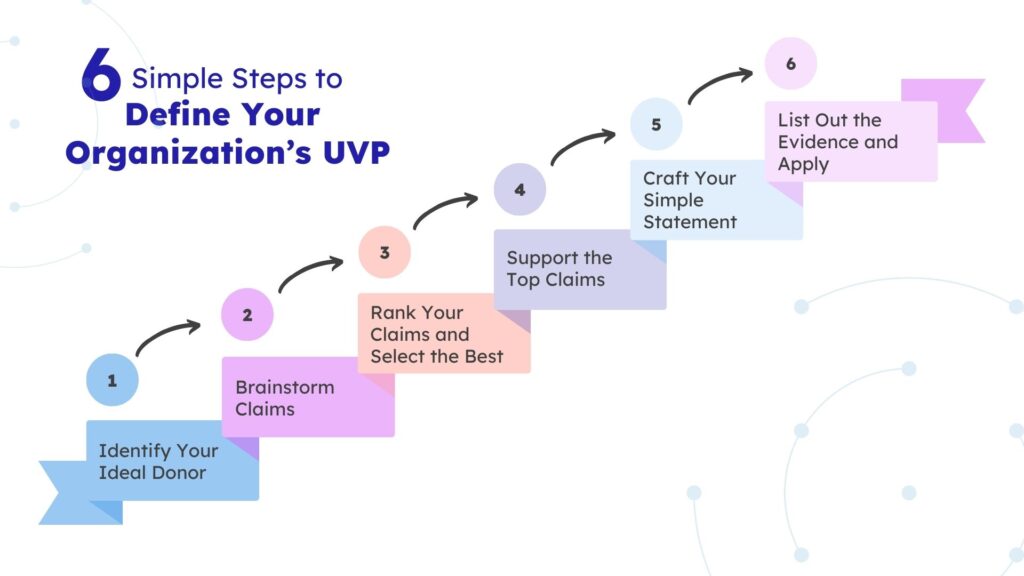
Take these steps to define your organization’s UVP:
- Identify Your Ideal Donor: Think about what your most committed donors say about giving to your mission. What messages do they respond best to? Also, consider the impact they want to make and what characteristics they share.
- Brainstorm Claims: List five or 10 claims you can make about your impact. This can include what your ideal donor will find most appealing, relevant, or compelling.
- Rank Your Claims and Select the Best: Score your claims for appeal and exclusivity on a scale of one to five, with “one” being the least appealing or exclusive and “five” being the most appealing or exclusive. Then, identify the three most exclusive claims by totaling the appeal and exclusive scores.
- Support the Top Claims: Find evidence that backs up each claim. For instance, do you have data to support your claims? And can you deliver on your promises?
- Craft Your Simple Statement: This is a summary and should be something that everyone in the room agrees on. It outlines what’s most important — the claims you’ll focus on above everything else your organization does.
- List Out the Evidence and Apply: For each claim, expand your evidence statements into proof points that will build your UVP. Your simple statement and proof points will help you decide what to include in your creative materials.
Organizations should review their UVP at least once a year, or more often based on donor feedback or if there are significant changes in the market, target audience, or programs. Create a process that works for you.
For more details about this process and examples, download the free eBook “Discovering Your Nonprofit’s Unique Value Proposition: A Step-by-Step Guide.”
Discover your nonprofit’s unique value proposition with detailed guidance and tips to identify your ideal donor.
Examples of Successful UVPs
Let’s look at some organizations that have mastered the UVP in their messaging:
Feeding America: On its donation page, Feeding America clearly states where the money goes. “Every dollar you give can provide at least 10 meals to families in need through the Feeding America network of food banks.” This simple, focused message makes it easy for donors to understand the measurable impact of their gift to this organization, which operates a national network of food banks and pantries.
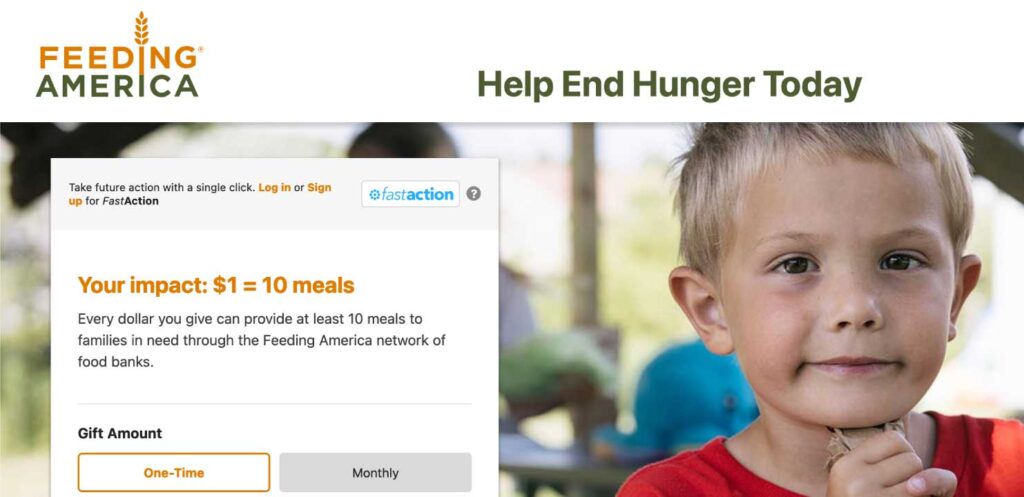
The American Cancer Society: When prospects explore ways to give on the ACS website, they see a clear statement about what they can expect for their donation. “Here’s the bottom line: Research saves lives. Your gift can help fund research that saves lives, like Natanya’s.”’ The UVP taps into an emotional connection and resonates with donors.
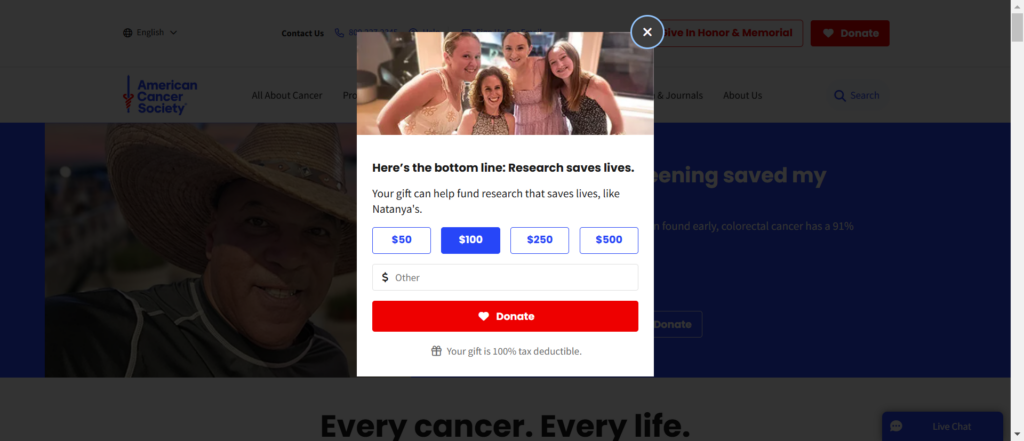
The Water Project: Many water charities make vague statements about providing water to every person on the planet. However, The Water Project gets specific: “$50 provides clean water for one person. Giving once funds a new water project. Giving monthly helps ensure water continues to flow every month.” Instead of focusing on the vast complexities of water access, the Allegiance Group + Pursuant worked with The Water Project to focus what matters – the beneficiaries.
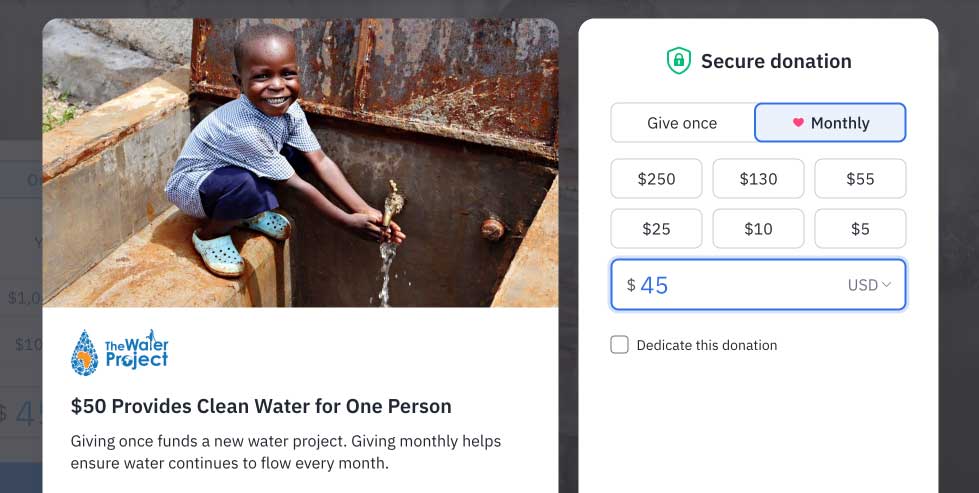
Habitat for Humanity: You’ll find Habitat for Humanity’s UVP in a single line on its homepage: “We build strength, stability and self-reliance through shelter.” Our team was able to highlight a specific target audience, and the unique problem Habitat aims to solve – and by highlighting the long-lasting effects of building homes.
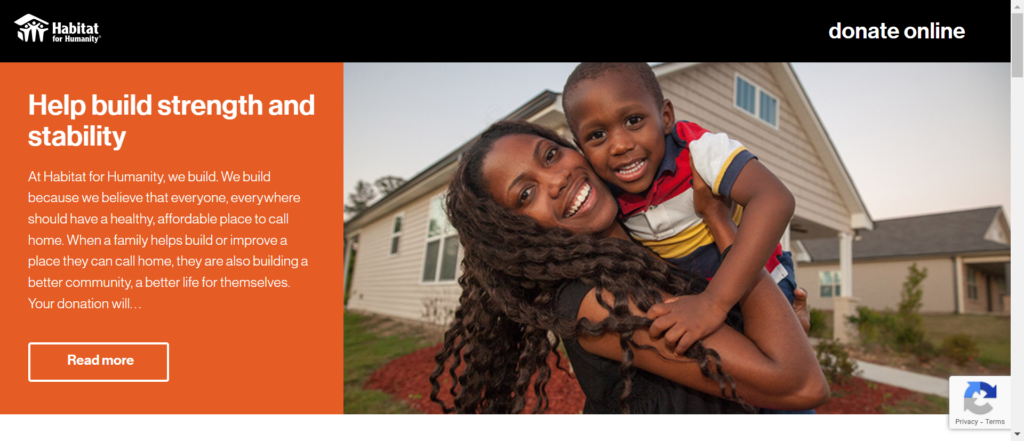
Ronald McDonald House Charities: This organization’s donation page gets to the point in a way that tugs your heartstrings. “Your donation helps RMHC families feel at home. Even when they can’t be. RMHC provides comfort, care, and support for families with children who are sick around the world.” The focus is clear, and the results are tangible – donors can clearly see how their dollars provide families comfort and care in a time of need.
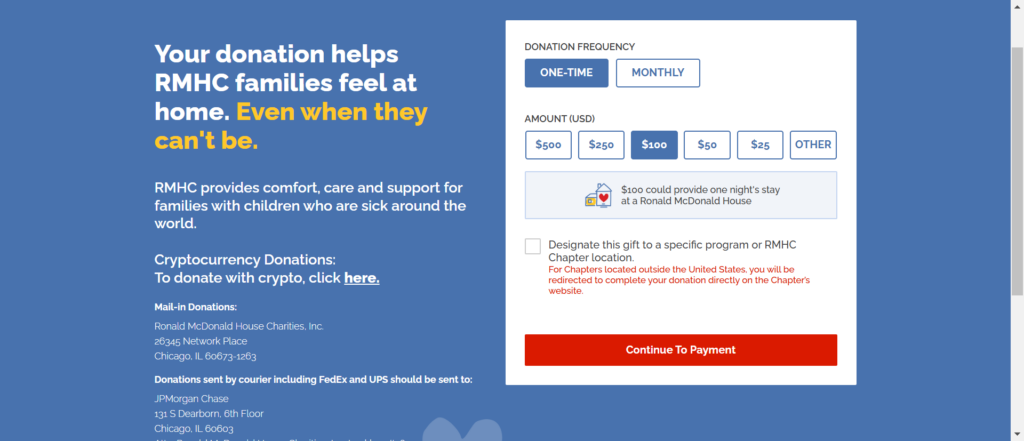
UVP Case Study: PAN Foundation
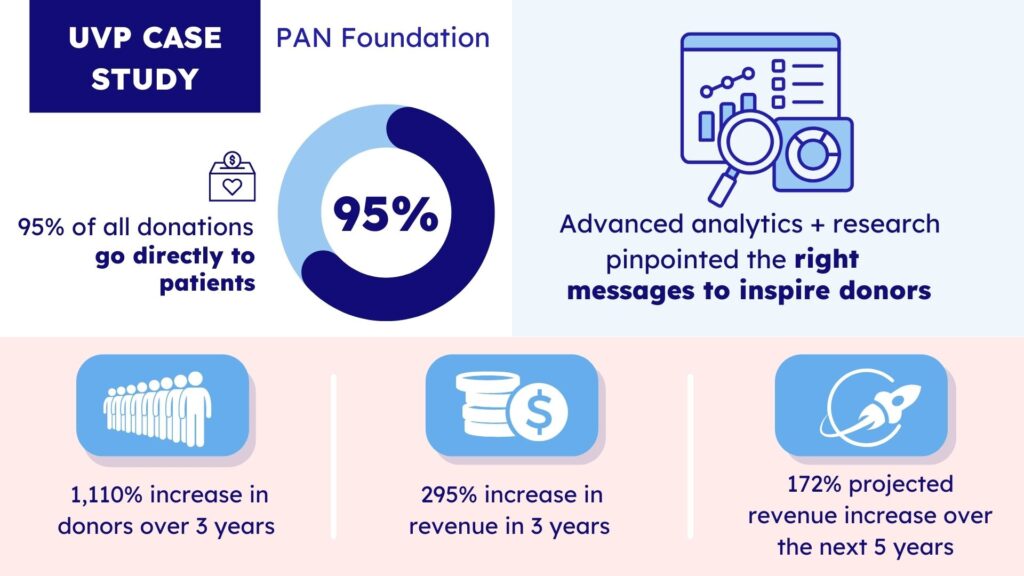
Consider the Patient Access Network (PAN) Foundation, which helps underinsured people with life-threatening, chronic, and rare diseases get the needed medications and treatments. It partners with donors, healthcare providers, and pharmacies to lower or cover out-of-pocket costs.
The mission is compelling, and 95% of all donations go directly to patients. However, the organization had little brand awareness and a small donor base.
The foundation partnered with Allegiance Group + Pursuant to evaluate how it communicated its unique value. Our team used advanced analytics and research to pinpoint the specific messages that would inspire those potential donors to give. When those messages were put in front of the right audience, the results were significant:
- 1,110% increase in donors over three years
- 295% increase in revenue in three years
- 172% projected revenue increase over the next five years
You’ve Defined Your UVP — What Now?
Effectively communicating your nonprofit’s UVP requires more than just defining it. It must be woven into the fabric of your organization’s messaging, engagement strategies, and everyday interactions. To ensure consistency with your mission, goals, and programming, your UVP should serve as the foundation for all communications, from donor appeals and grant proposals to social media and community outreach. It should be reflected in the language your staff and board members use, the stories you tell, and the impact you showcase.
Integrating the UVP Into Fundraising Planning and Messaging
With your UVP in hand, you can plan marketing and fundraising campaigns that will resonate with your target audience. Remember, your unique value proposition speaks to why somebody gives to your organization. So, the why should be at the heart of all your creative work.
- Focus on the beneficiaries and be specific
- Avoid technical language and jargon
- Use real images (not stock photos) and videos to show impact
- Leverage storytelling about the difference a donor made and share the stories of donors
Communicating Your UVP
Your UVP should be well defined across every platform you use. Say that, in its simplest form, your unique value proposition is that you provide three meals a day to local children during the summer.
Here’s what that might look like on your various channels:
- Record an interview with a child and parent who receives your services on video. Post the extended version on YouTube and snippets on Facebook, Instagram, and X (formerly Twitter).
- Transcribe the recording into an interview-style blog post you can share on your website and in emails.
- Pull some quotes and images from the interview and create graphics to share on your website and social media pages and in an email campaign.
- Feature the graphics in mailings such as appeals, newsletters, and even holiday cards. Remember to keep the focus on people. Not “We fed 3,000 kids this summer,” but “You fed 3,000 kids this summer.”
You can also interview volunteers who pack up the lunches to create content from a donor perspective. By investing in a writer, photographer, and videographer for a few hours or days, you can capture stories that will fuel your campaigns for the entire year. And the best part is that your unique value proposition will be at the center of it all.
Wrapping Up
Your UVP is critical to your organization’s success, but defining it once isn’t enough. It’s a living statement that should be re-evaluated regularly when you shift your focus, discover new needs, or based on donor feedback. The UVP’s narrow focus is key to attracting more qualified supporters – not trying to appeal to everyone.
Allegiance Group + Pursuant are here to help organizations like yours define and communicate their UVP. With our extensive experience in nonprofit marketing, fundraising, and the latest technology, we bring our deep knowledge and connections to empower your success.
Use the six steps outlined above to develop your unique value proposition. You can also check out these additional resources: